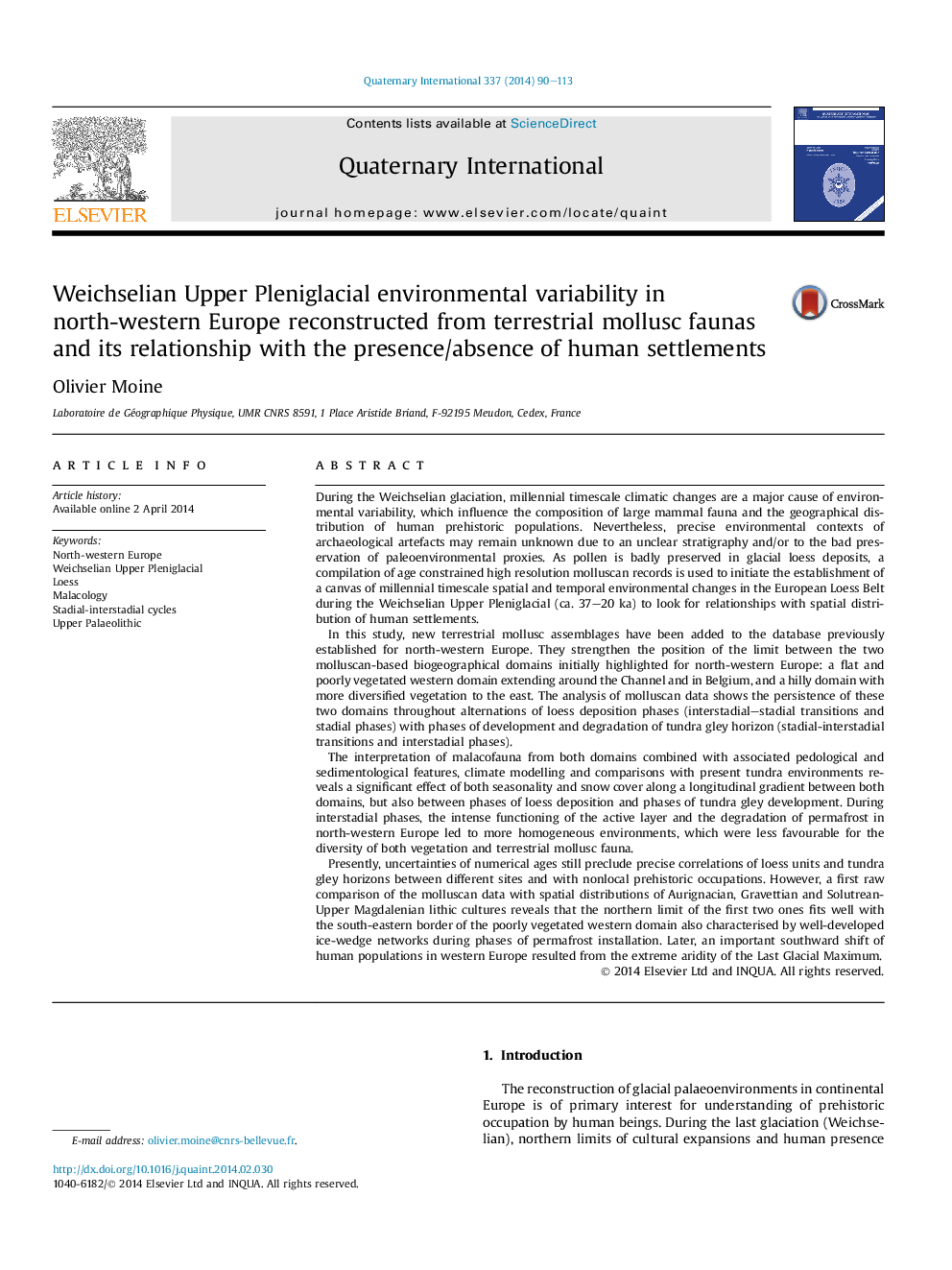| کد مقاله | کد نشریه | سال انتشار | مقاله انگلیسی | نسخه تمام متن |
|---|---|---|---|---|
| 1041442 | 1484158 | 2014 | 24 صفحه PDF | دانلود رایگان |
During the Weichselian glaciation, millennial timescale climatic changes are a major cause of environmental variability, which influence the composition of large mammal fauna and the geographical distribution of human prehistoric populations. Nevertheless, precise environmental contexts of archaeological artefacts may remain unknown due to an unclear stratigraphy and/or to the bad preservation of paleoenvironmental proxies. As pollen is badly preserved in glacial loess deposits, a compilation of age constrained high resolution molluscan records is used to initiate the establishment of a canvas of millennial timescale spatial and temporal environmental changes in the European Loess Belt during the Weichselian Upper Pleniglacial (ca. 37–20 ka) to look for relationships with spatial distribution of human settlements.In this study, new terrestrial mollusc assemblages have been added to the database previously established for north-western Europe. They strengthen the position of the limit between the two molluscan-based biogeographical domains initially highlighted for north-western Europe: a flat and poorly vegetated western domain extending around the Channel and in Belgium, and a hilly domain with more diversified vegetation to the east. The analysis of molluscan data shows the persistence of these two domains throughout alternations of loess deposition phases (interstadial–stadial transitions and stadial phases) with phases of development and degradation of tundra gley horizon (stadial-interstadial transitions and interstadial phases).The interpretation of malacofauna from both domains combined with associated pedological and sedimentological features, climate modelling and comparisons with present tundra environments reveals a significant effect of both seasonality and snow cover along a longitudinal gradient between both domains, but also between phases of loess deposition and phases of tundra gley development. During interstadial phases, the intense functioning of the active layer and the degradation of permafrost in north-western Europe led to more homogeneous environments, which were less favourable for the diversity of both vegetation and terrestrial mollusc fauna.Presently, uncertainties of numerical ages still preclude precise correlations of loess units and tundra gley horizons between different sites and with nonlocal prehistoric occupations. However, a first raw comparison of the molluscan data with spatial distributions of Aurignacian, Gravettian and Solutrean-Upper Magdalenian lithic cultures reveals that the northern limit of the first two ones fits well with the south-eastern border of the poorly vegetated western domain also characterised by well-developed ice-wedge networks during phases of permafrost installation. Later, an important southward shift of human populations in western Europe resulted from the extreme aridity of the Last Glacial Maximum.
Journal: Quaternary International - Volume 337, 9 July 2014, Pages 90–113
